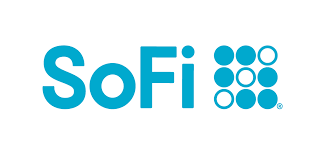Watch Out for This Costly Extra Fee When You Travel Internationally
KEY POINTS
- When you're abroad, dynamic currency conversion gives you the option of paying in U.S. dollars instead of the local currency.
- Although it's helpful to know the price in your own currency, there's usually a sizable markup for this service.
- One investigation found that prices increased by 2.6% to 12.0% when using dynamic currency conversion.
It's a seemingly harmless question you run into when abroad. During the checkout process, the cashier asks if you want to pay in the local currency or have it converted to U.S. dollars. It can also happen at ATMs, with the machine giving you the option of proceeding with your withdrawal using either currency.
This is known as dynamic currency conversion (DCC). Not all international merchants offer it, but many do. At first, it might sound convenient to figure out how much you're paying in your own currency, without needing to check your credit card statement later or do the math yourself. But despite the convenience factor, you're much better off saying no.
How dynamic currency conversion costs you money
While DCC is more convenient, it's also more expensive. The amount you end up paying almost always includes a markup on the normal exchange rate.
It's no small fee, either. To find out how much DCC costs, German organization Stiftung Warentest sent investigators to 11 countries where DCC was offered. It found that in all cases where DCC was used, the price consumers paid increased, by amounts ranging from 2.6% to 12.0%. There have also been reports of more extreme examples, including DCC rates as high as 18.0%.
In fairness, when you choose DCC, you see exactly how much you're going to pay. There's no deception involved in the pricing. For example, if you're shopping in Europe, you might see something like this on the card reader as you checkout:
- Option A: 200 Euros
- Option B: $242
Not everyone realizes that they're paying a premium for the currency conversion. After all, unless you know the current exchange rate and you do the math yourself, it's hard to tell that you're getting the short end of the deal.
You're essentially paying extra just so you can see a price in dollars when you make your purchase. It's not worth spending more for such a small benefit.
Even if you're trying to keep track of your spending, you can view transactions made with your credit cards and debit cards right away. These show up as pending transactions in your banking apps. The exact amount won't be 100% accurate until the transaction settles, but you can still get a fairly accurate idea of how much you're spending this way.
What to remember when paying abroad
There are several fees that can cost you extra when traveling internationally. Fortunately, these are avoidable. Here's what to do so you don't end up paying more than necessary.
- Pay for purchases with a credit card that doesn't have a foreign transaction fee. Some credit cards charge extra, normally 3%, for foreign transactions. Make sure to stick to no foreign transaction fee credit cards while abroad.
- Choose a bank that reimburses ATM fees. You typically get a better exchange rate by withdrawing cash in the local currency at an ATM instead of using a money exchange. ATM fees can change the equation, so get a bank account that reimburses them. Check out the best banks for international travel to see some great options.
- Always decline dynamic currency conversion. Let your card's payment network handle the currency conversion. It's almost guaranteed to give you a much better exchange rate than you'd get through DCC, especially if you have a card with no foreign transaction fee.
Declining DCC is easy. If the person charging your card asks if you want to pay in the local currency or U.S. dollars, just tell them you want to pay in the local currency. If you're at an ATM with DCC or making selections on a card reader yourself during the checkout process, you'll be presented with two pricing options, one in each currency. Select the option for the local currency, and you're good to go.
Our Research Expert
We're firm believers in the Golden Rule, which is why editorial opinions are ours alone and have not been previously reviewed, approved, or endorsed by included advertisers. Motley Fool Money does not cover all offers on the market. Motley Fool Money is 100% owned and operated by The Motley Fool. Our knowledgeable team of personal finance editors and analysts are employed by The Motley Fool and held to the same set of publishing standards and editorial integrity while maintaining professional separation from the analysts and editors on other Motley Fool brands. Terms may apply to offers listed on this page.



